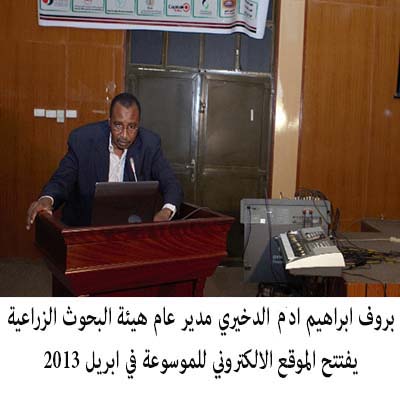مبادئ الانتاج الحيواني
Integrating Wildlife
Issues into the Prevention,
Control & Response to Transboundary Animal
Diseases

Phenotypic characteristics of Sudanese camels (Camelus dromedarius)
I A Ishag, M O Eisa* and M-K A Ahmed**
Abstract
Phenotypic descriptions data were obtained from camel ecotypes from different regions in Sudan. The purpose of this study was to characterize and describe some of Sudanese camel breeds according to their morphological traits. The results of this study showed that most ecotypes (Shanbali, Kenani, Maalia, Maganeen, Butana, Kabashi and Lahwee camel) presented similar morphological features vis: grey, brown, yellow color, large, heavily built animals with a developed hump and large to medium size of udder and teats. These ecotypes are classified as pack (heavy) camels. However; although the Rashaidi camel was also classified as a pack camel; exhibited different phenotypic characteristics (dark grey, pinkish red color, light weight and a shorter height at shoulders) compared to former ecotypes. On the other hand; Anafi and Bishari breeds have similar features (white, yellowish color and light weight) and classified as riding and racing camels. The study concluded that the Arabi camel (Shanbali, Kenani, Maalia, Maganeen and Lahwee camel) has better performance and higher milk production and considered as dual purpose camel (meat and milk). Also the study add great value for national and to preserve indigenous breeds, then these information can be useful to design of camel breed conservation program in Sudan
Use of mathematical modeling to evaluate production performance of some commercial layer strains under Khartoum State conditions (Sudan)
Click here


